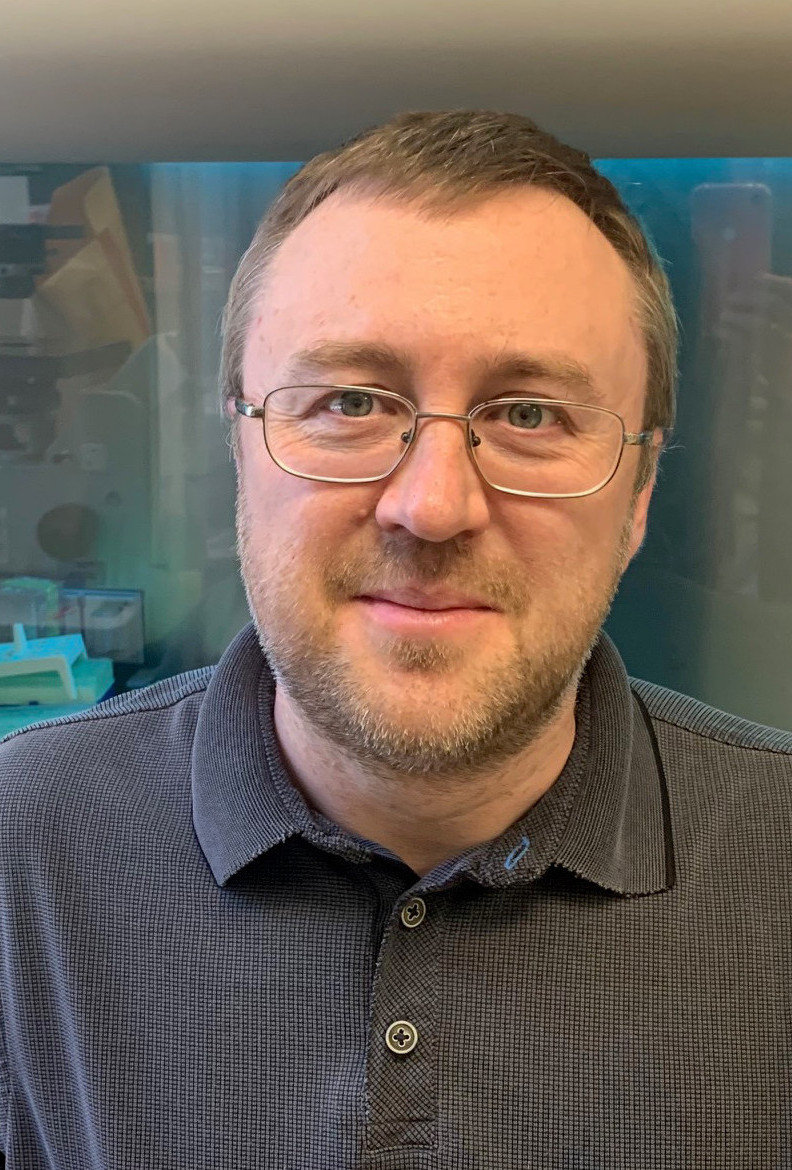Collagen IV and the Aspirnauts
By: Bryce Emanuel, Evolutionary Studies undergraduate communications assistant
Sergei Boudko, a research assistant professor of Medicine in the Division of Nephrology and Hypertension, recently published a paper, Collagen IV of basement membranes: IV. Adaptive mechanism of collagen IV scaffold assembly in Drosophila. Boudko earned his Master’s degree in Applied Physics and Mathematics from the Moscow Institute of Physics and Technology and a Ph.D. from the University of Basel in Switzerland.
Boudko is interested in collagen IV which is made up of three polypeptide chains. These chains can form a network that acts as a mesh to allow the kidney to function as a filter. Collagen IV has been implicated in health and kidney diseases such as Alport syndrome (genetic), Goodpasture disease (autoimmune), and diabetic nephropathy (kidney complications in diabetes). These diseases may lead to kidney failure. Boudko seeks to characterize collagen IV and how it forms the mesh network that acts as a filter to the kidney.
In a 2016 paper, the group found that chloride signaling was integral to the assembly of collagen IV scaffolding. Boudko is particularly interested in how the mesh is formed through a particular crosslink called NC1- NC1 bonds. This type of crosslink is found primarily in collagen IV. Boudko’s collaborator, research assistant professor Elena Pokidysheva, found that the kidney had to have been formed with this meshwork already in place. This is evidenced by a high chloride concentration that drives the formation of the alpha links of the collagen IV meshwork.
Boudko’s research is novel in that he uses evolution as a lens by which researchers can examine the kidney. It was Boudko’s team that discovered collagen IV is found in a wide variety of organisms, leading to a better understanding of the relationship between humans and other species. Boudko used two methods by which to understand how collagen IV manifests in other species, as well as humans.
The first, is through characterization of the manner by which collagen IV links to form a mesh. Boudko’s collaborator, Elena Pokidysheva, examines the manner by which collagen IV has assembled through evolution. This is in service to understanding where the individual components of collagen IV appeared in evolution. Using evolution as a lens to characterize collagen IV, not only helps to better understand where humans came from, but can also help us to use more representative models of organisms to better understand collagen IV and its makeup.
Aspirnauts spend almost 6 weeks helped to contribute to the paper, with 25 high school students interested in science, (during publishing of the paper they were in high school). Boudko, when asked how he wanted to publish his Editor’s pick paper on chloride pressure, made sure to have each and every student who helped to contribute to the research with a biography and a headshot. Boudko hopes that in the future, his characterization of the genetic mechanisms by which the collagen IV forms the meshwork of the kidney, there can be interventions implemented that can address the implications of autoimmune diseases that have been found to affect the formation of the collagen IV meshwork.